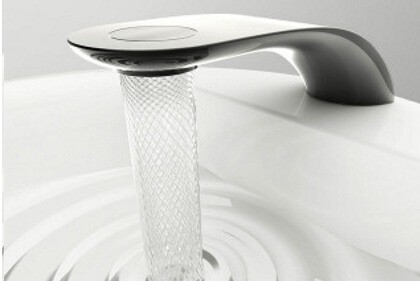

Saving princesses is something I know plenty about. As a knight, it is one of my primary pastimes. From high towers, from out of the clutches of dragons, dungeons, moats… you get the idea.
And yet, since I am a plumbing knight, I also know plenty about saving other things. I know how to save an air conditioner that seems beyond repair. I know how to clean out a rusted pipe, and I know how to replace a faucet that’s acting up. I save people money, and I save people time.
Today, I want to talk about something else I enjoy saving: water. As summer approaches swiftly, it’s time to start thinking about how much we use water. Calgary’s water woes have been getting worse. According to the City, the rapid growth of the city over the past decade has put stress on the city’s limited water supply.
Saving Water and Saving Money
Supply and demand—it’s simple. But beyond helping to ensure the water keeps flowing in Calgary, there are other reasons to save water. Many of the Calgarians we’ve talked to see saving water as a good route to saving money.
That’s no surprise. Water is expensive. Investopedia estimates that the average homeowner spends about $500 per year on water alone. But how much money can you really save?
That’s a hard question to answer because everyone’s water consumption is going to be fairly different, in the same way there is no one-size-fits all set of armour. However, it’s possible to make some estimates based on averages.
One quick example is the difference between low-flush toilet and a more traditional toilet. Compare the numbers: 6 Lpf (litres per flush) with a low-flush vs 13.2 Lpf with a regular toilet. That’s a pretty big difference, especially when you consider that a house’s toilet usually uses over 25% of the water consumed by the household.
So, if we assume that, of that $500 number, your toilet accounts for $125 per year, and you can reduce that by more than half by using a low-flush toilet, you’re looking at a decent amount of money saved. Year over year, an investment like that pays off, just like it pays off to have a good anti-dragon policy in place in your kingdom. It just makes sense!
New Products That Save Water
The good news is that, as it continues to make more and more economic sense, plumbing fixture companies are beginning to produce more and more “eco” product lines that save consumers money off their water bills.
Products like the futuristic looking design that recently came out of London’s Royal College of Art. This innovative faucet design spirals the water to increase pressure and coverage while minimizing water use, in many cases by as much as 15%. Again, that may seem insignificant, but over the months and years it adds up.
In many cases, simply buying a new faucet or toilet will decrease the amount of water your house will use, simply because manufacturers know that these kinds of products sell well. However, things weren’t always this way. If you have a toilet or faucet that was made before 1994, it’s likely far less efficient than anything newer.
So, if your home is older, you could do yourself a pretty big favour by switching your faucets and toilets to newer models, despite the initial cost.
In some ways, it’s like maintaining a castle: if your moat is costing too much to maintain, sometimes it makes sense to build a new moat.
Where Do I Start?
Saving water is one of those things where every small bit of action you take is going to make a difference. For most, the best way to start will be to change habits slightly, since that doesn’t require installing new products.
EarthEasy provides plenty of helpful tips for saving water simply by changing how you use water. Here are a few of our favourite tips:
- Look for Leaks. A small leak can waste gallons of water each day. Have a plumber test your pipes and ensure that you’re not paying for water you don’t even use.
- Water Your Lawn Sparingly. Many over-water their lawn, thinking it needs more water than it does. Often, you can actually damage your lawn by doing this.
- Avoid Using Your Toilet as a Garbage. Every time you flush something down the toilet that doesn’t belong in there, you’re wasting plenty of water.
- Limit Your Shower Length. Try to be more efficient in the shower. Make it a game: see how clean you can become in the shortest time possible.
Start Saving Today
There’s no doubt that, as a society, we’re moving towards a more conservationist approach to water, and that is in large part being driven by the fact that it just makes economic sense to save water.
So, why not? Sometimes it can be difficult to determine exactly how much water your activities use. If you’d like us to investigate your water use levels, give us a call at the number the top of the page and a knight will come save your princess. I mean… help you save water.


